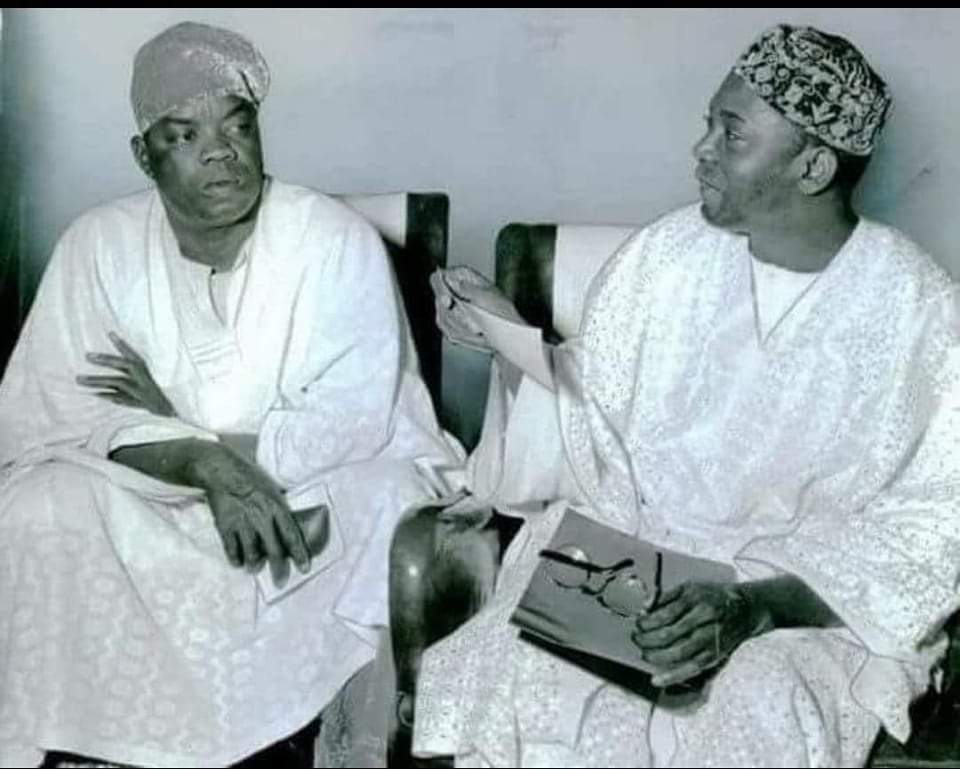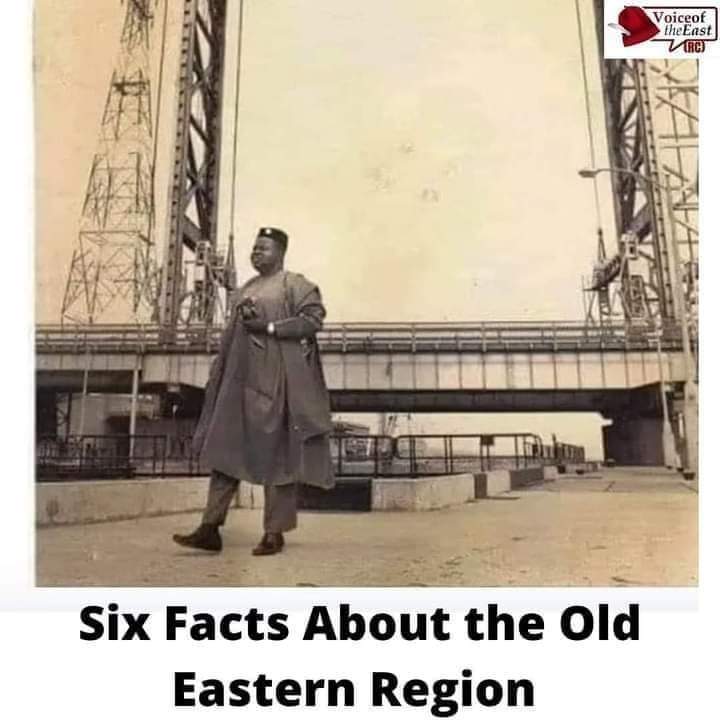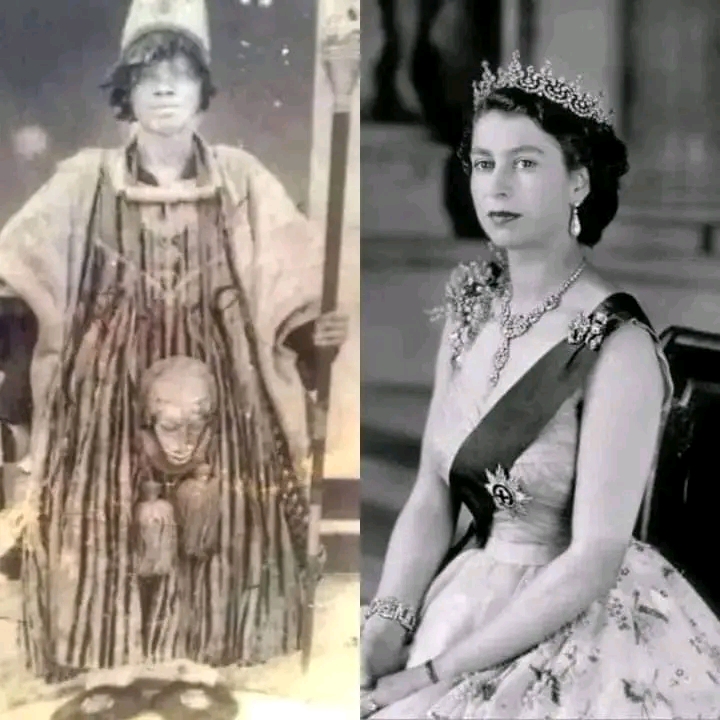How the Economy of the Former Eastern Region Was Planned and How the Civil War Truncated It -Prof. Chidi Osuagwu
MagazineThe economy of the former Eastern Region was planned from the ground up by the US consulting firm Arthur D. Little.
Zik brought them and they worked with MI Okpara at first, then with Sam Otti and Eluwa who headed the Civil Service, and later with Louis Phillip Odumegwu Ojukwu who at the time was the Chairman of the Eastern Nigerian Development Corporation (ENDC) and also the Chairman of the Eastern Nigeria Commodities Board (ENCB)
Louis Phillip Ojukwu also sat as Chairman of 15 multinational companies at the time – John Holt, PZ, Michelin, Costain, Thomas Wyatt, Guinness, GB Ollivant, etc.
He was so rich that he single-handedly funded the establishment of the Lagos Stock Exchange but refused to list his company there for fear of losing control.
His photo still hangs proudly on the floor of that exchange as its first president.
Arthur D Little also worked with a coterie of young Eastern Nigerian economists at the time – Pius Okigbo (Ph.D. Northwestern), Ukwu I. Ukwu (Ph.D. Cambridge), Chukwu Sunday Okongwu (Ph.D. Harvard). These young men in their early twenties worked with Arthur D Little to plan our economy from scratch.
I know this because Ukwu I Ukwu taught me at Nsukka and I also worked in Dr. Chu SP Okongwu’s economic planning firm right from during and after grade school in Nigeria.
Arthur D. Little recommended the setting up of a university in the East to produce key skills needed to drive economic growth as most of those skills were not being taught in Ibadan at the time.
Zik sent Dr. Akpabio (MA Columbia) who at the time was the East’s Minister of Education on an extended tour to universities in Michigan and New York for collaboration in key fields like medicine, engineering, surveying, photogrammetry, and business administration.
UNN was the first university in Nigeria to offer many of these courses. Ibadan at the time taught mostly Classics, General Science, and later Medicine.
Palm oil, Palm Kernel, Coal, Cocoa (from Ikom), Coffee from Obudu, and later petroleum from firstly Izombe – Oguta area and later from Oloibiri in Ijaw land drove the economy of the East.
In terms of development, the East started late, compared to the West.
Development and education started in Lagos and Abeokuta right after Beecroft occupied Lagos in the 1850s and made it a British colony. Lagos and the SW thus had more than a 70-year headstart over the East in terms of total gross capital formation and the platform that it gave for growth.
But after the implementation of Arthur D Little’s recommended growth plan, the East’s economy grew by more than 9.2%, starting from 1958 till 1967 when the war began
At over 9%, the Eastern Region in this period had the fastest growing economy on earth consistently for 9 years and was estimated to equal Western Nigeria by 1978 (in terms of total gross capital formation) and then overtake the Western Region after that.
The civil war truncated that momentum and the East never recovered after that.
Louis Philip Odumegwu Ojukwu brought his industrial influence to bear on the growth plan as he singlehandedly pushed for the establishment of not just industrial estates but industrial corridors in the region.
An industrial estate is localized. An industrial corridor joined two or more industrial estates to form an industrial conurbation.
Industrial estates sprang up across the East:
TransAmadi in PH
Aba for light industries
Umuahia for biotechnology
Emene in Enugu for steel and industrial automation
Nkalagu, PH, and Calabar for cement and building materials
Onitsha as an emporium to drive retail trading
Obudu in Cross River for dairy, holidaying and corporate meetings
Because he was the chairman of 15 multinational companies at the time, he used his influence to attract many of them to buy into the East’s industrialization plan.
Okpara also partnered with Israel for the setting up of industrial farms and plantations – seedling production, extension services, assistance to farmers, etc.
So plantations (cashew nuts, palm kernel, cocoa, coffee, timber, etc) sprang up in Oghe (Enugu State), Okigwe (Abia State), Obudu, Itumbenuzor, Akamkpa all in Cross River state, and various parts of Rivers, Akwa Ibom, Imo, Abia, etc.
Okpara personally delivered some of the seedlings himself by driving behind the trucks that did the delivery.
Sir Louis Phillip Ojukwu pushed for the establishment of 3 major cement plants in the region – Nkalagu, Eastern Bulkcem in PH, and Calabar cement factory in Calabar.
Nkalagu and PH opened before the war started in 1967. Everything for the take-off of the Calabar cement factory was purchased but the war truncated its take-off.
In 1970, Governor Esuene of the newly-created Cross River State opened the Calcemco plant to the applause of many.
Three industrial corridors were also planned for the East:
The Emene-Nkalagu Industrial corridor was too focused on automobiles, building materials, and industrial automation. Kaiser Motors in the US at the time (it has since been acquired) had agreed to build a car plant in Emene and a plant for car engines. That corridor was to stretch for almost 100 miles.
The second industrial corridor was to stretch between PH and Aba. So industrial centers were set up in Trans Amadi and in Aba and for over ten to 15 years, these two centers were to be linked by many feeder industries that would be located on the highway joining both cities.
Okpara had hoped that over time, the PH-Aba industrial corridor would follow the old road between Port Harcourt and Enugu and join with the Emene – Nkalagu industrial corridor to create a massive industrial conurbation that almost imitates the almost 200-kilometer Ruhr Industrial Valley in Germany built under Chancellor Otto Von Bismarck.
Onitsha was to drive the East’s Retail economy and so the market was built there as an Emporium…to attract buyers from all over Nigeria and West and Central Africa so they could come to spend their money in the East.
Dubai would copy this same model 50 years later and implement it successfully but on a global scale. Onitsha market achieved its purpose by 1958, two years after the East achieved self-government. It became the preferred destination for retail and bulk shoppers from over West Africa and even Cameroon, Gabon, and Congo. This gave the Anambra Igbo a headstart in retail trading…an advantage that they enjoy to date.
All of these development and growth projects were centrally driven by the Eastern Nigeria Development Corporation – ENDC – and the revenues were centrally aggregated into the account of the Eastern Nigerian Commodities Board (ENCB). Both groups were headed by Sir Louis Phillip Odumegwu Ojukwu.
Funds for development came mostly from 3 sources:
1. Local revenues from the export of cocoa (Ikom and Itumbenuzor), coffee (Obudu and Arochukwu), timber (Akamkpa), coal (Enugu-Udi), palm oil (Rivers, Imo, Abia), palm kernel (Rivers, Imo, Abia)
2. Foreign Direct Investments(FDI)
3. Loans from Commonwealth Development Corporation (CDC)
Umuahia was to midwife the Easts’ biotechnology industries which explains why Golden Guinea Brewery and the Root Crop Research Institute were established there.
Obudu, because of its pristine hills and its fresh weather, was to be a holiday resort for many as well as a primary center for a dairy industry that just started before the war commenced. Obudu Cattle Ranch was the first in a series of investments that got scuttled in Obudu by the war.
Lastly, oil was discovered late. Igwe J. U. Nwodo, Eastern Nigeria’s first Minister for Trade (father to the former Ohaneze Chairman) negotiated the first contracts with Shell on a 50-50 investment and sharing basis.
Virtually all of the East’s oil assets were seized by the Federal Government under Gowon with no compensation paid to date. The Federal Government simply inherited the East’s 50% slot and paid nothing for it. Today everyone benefits from it.
Most of the catalytic cracking and downward refineries that NNPC would later build were in the plans that the Eastern Regional Government had for the region.
Today, some of those plants are located in far-away Kaduna and no mention is ever made of the East.
Every Nigerian today depends on that oil to survive, including states that claim that they can survive from internally-generated revenues.
I believe that rather than whine every day, we Igbos should sit down and learn our history… take a look at the growth plans that got scuttled in 1967, and see how we can work together to pick up the pieces and build again from scratch.
For more breaking news and videos and Publication of your news content, essays, tapes, or any other news-worthy materials, please send them to cdanews9@gmail.com
For more inquiries and Advert, please call or WhatsApp. +234-805-410-9484.
Follow us on Twitter @anewsreporters
Visit our website,
www. cdanewsonline.com





